The history of Malta, the very identity of the island, is intrinsically linked to the Mediterranean Sea that surrounds it.
The morning before I emigrated from Malta, a friend told me: “Take one long hard look at the sea before you leave”. That sea has dominated the life of this nation since time immemorial and has defined its history, traditions, economy and our very identity as islanders. A sea that seemingly leaves us drifting alone, cut off from continental Europe and the African landmass and yet has served as a busy trade route for millennia.
Malta’s strategic position in the middle of what is considered to be the cradle of civilisation has meant that the archipelago has always been a hub of maritime activity, in the midst of what is essentially a super highway of trade, transportation and cultural exchange.
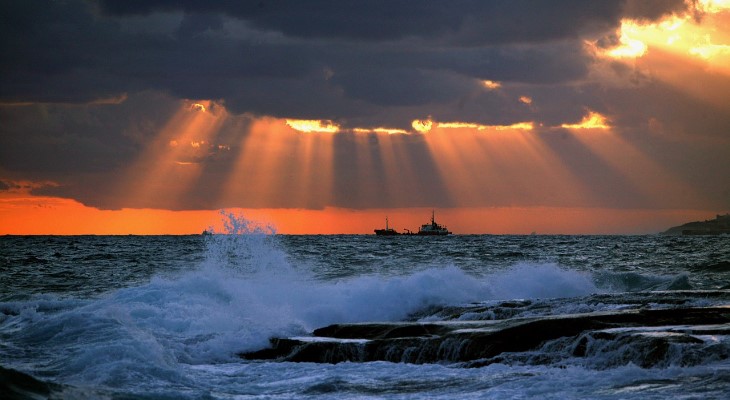
©viewingmalta.com - (Chen Weizhong)
It is believed that Malta’s first inhabitants may have crossed over from Sicily in prehistoric times using rafts or some other primitive vessels. Ship graffiti and the relief of a fish found at Tarxien Temples, which dates back to around 3,000 BC, reflect early man’s relationship with the sea.
Although seafood was not a primary source of nourishment for these early settlers, a cultural and spiritual connection was already being established with the sea. A necklace made of large fish bones was also unearthed at the temple, which indicates it may have been used as some kind of amulet.
If you have visited Hagar Qim and Mnajdra Temples you may have noticed their location on the cliffs overlooking the sea. Well, it seems that may not be a coincidence at all, as studies show a relationship between the temples’ locations and various bays or sites of navigational importance.
In the Bronze Age, sea trade was already part of the island’s economy. Vessels would visit Malta to buy the fine linen which was produced by the islanders at the time. Visiting traders also brought with them goods to sell, as well as new fashions and trends. Jewellery discovered in graves from this period reveal that the inhabitants were not only able to afford such luxuries, but were also familiar with techniques being developed far away from these shores.
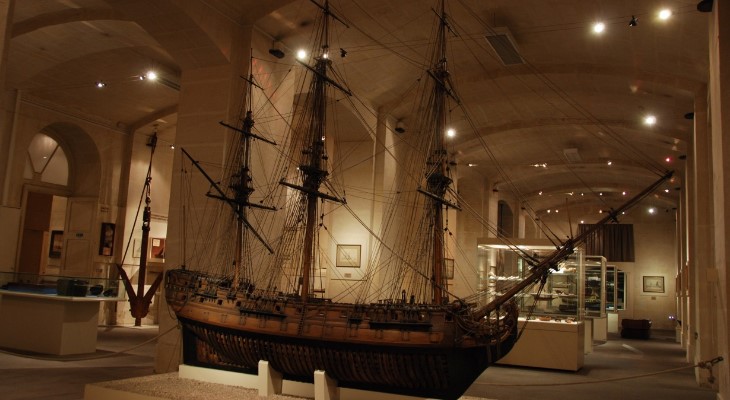
©viewingmalta.com - (Jurgen Scicluna) Malta Maritime Museum
However, it was in Phoenician times that the Maltese Islands established themselves as a major staging post for trade and shipping. Shipwrecks off the coast of Gozo highlight how important Malta was in Punic times. As marine archaeologist Dr Timmy Gambin writes, “the island of Gozo must have been used as an essential stop-over between Carthage and various destinations in Italy, as well as in the Eastern Mediterranean. Amphorae from these wrecks point to cargoes from North Africa, probably originating from more than one vessel.”
At the time, a number of maritime sanctuaries marking navigational points of references were built on headlands and havens. One such example was Ras il-Wardija, built on a cliff top visible to any ships sailing towards Gozo from Tunisia.
The Roman period marked a golden era for Malta with a boom in the local textile industry and sea trade. Fish was elevated to a main ingredient as part of the mensae primae, served hot as a soup or grilled. However, as it was considered a “fasting food”, fish was never presented on the dinner table alongside meat.
Malta’s excellent harbours and central location as a stop-over port remained of crucial importance throughout history. This role never waned in the Byzantine era nor during the Arab occupation. In fact, it was at this time that semitic names with maritime connotations such as Marsa (meaning harbour) and Mgarr (meaning a loading place) were first coined and are still around today.
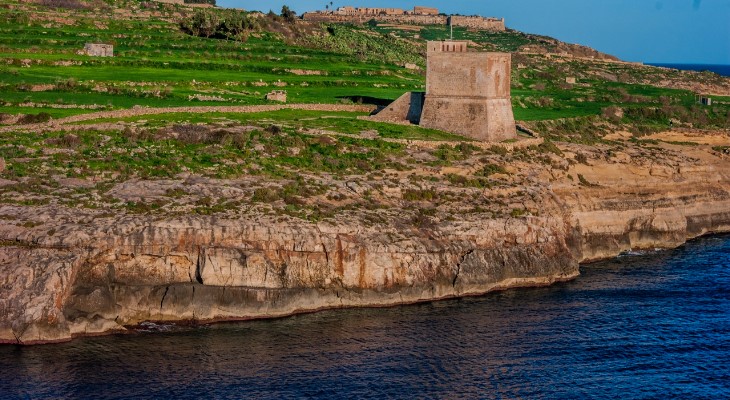
©viewingmalta.com - (Dorita Borg) Coastal Watch Tower built by the Knights of St John at Mgarr ix-Xini (mgarr derives from Arabic meaning a loading place; xini means ship or vessel)
In the 13th century, Malta became a centre not only for trade but also for piracy, after it was given to a series of 'Counts of Malta' as a fiefdom to the admiral of the Sicilian fleet. In 1283, the Maltese Islands found themselves at the centre of one of the most important naval battles of the period, when the Angevin and Aragonese fleets met at the mouth of Malta’s main harbour.
With the arrival of the Knights of St John in 1530, Malta’s industry went from strength to strength, and saw the introduction of a new business venture: corsairing. So popular was this enterprise that practically everyone was involved, purchasing bonds and shares in the exploits of a particular vessel. Dr Gambin writes: “One can truly say that this particular maritime activity had such far-reaching social and economic effects that it can indeed be considered as inseparable from contemporary society.”
The Knights oversaw the expansion of Grand Harbour and the construction of fortifications around the cities which grew around the natural port’s numerous creeks. They also constructed coastal watchtowers along the entire length of the Maltese Islands as a first line of defence against seaborne invaders. Warehouses were built to improve facilities for traders and ship owners, and granaries were dug out to ensure that imported grain was stored properly.
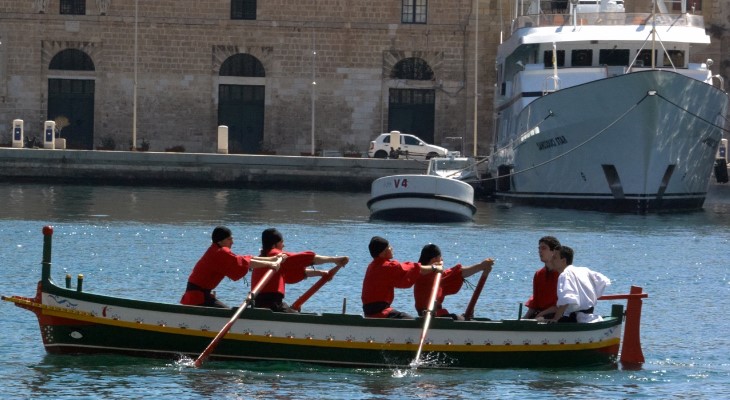
©viewingmalta.com - (Clive Vella)
Local seamen enjoyed such a famous reputation for their expertise and prowess that in the latter years of the 18th century, the Royal Navy would call on the Maltese shores specifically to recruit hundreds of local men.
By the time Malta became a British colony, the population was “attuned to a life bound by the sea as well as an infrastructure that complemented the requirements for [the Royal] Navy.” The island had spawned not only able seamen but a whole raft of ancillary skills including rope makers, carpenters and sail makers. The British established the Dock Yard and constructed the breakwater at the mouth of Grand Harbour. The opening of the Suez Canal transformed Malta into an essential coaling station.
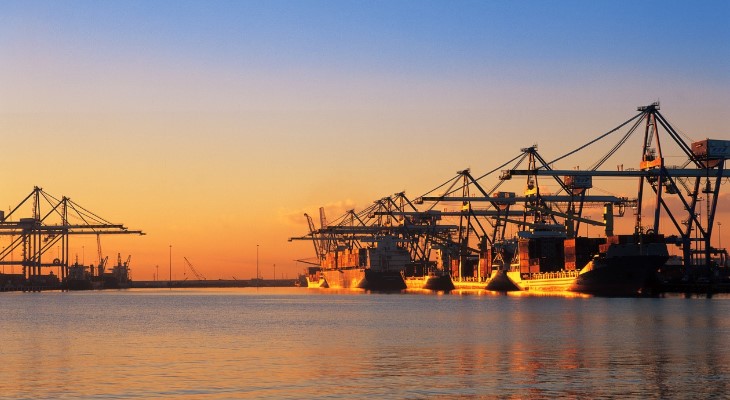
©viewingmalta.com - Malta Freeport
During World War II, Grand Harbour took centre stage, with warships choking the waterways. Today that same Grand Harbour is a serene hive of genteel activity welcoming cruise liners. The sea remains a critical part of the island’s economy thanks to the Freeport in the old fishing village of Marsaxlokk. Built in 1988, it was the first transhipment hub in the Mediterranean, and today ranks the third largest transhipment and logistics centre in the region.
Away from the grandeur of history, the islanders have been carving a living out of the sea for millennia. They became expert boat builders, constructing anything from the iconic fishing boats with their traditional colours of blue, red and yellow streaked with white and green to tankers at Malta Shipbuilding.
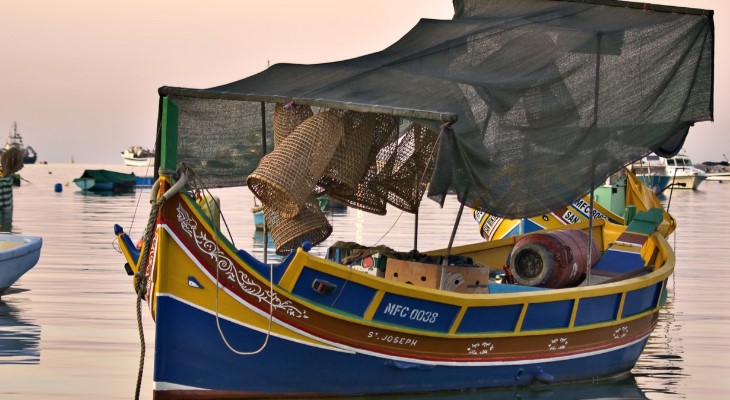
©viewingmalta.com - (Clive Vella)
The fishing luzzu is symbolic of maritime folklore, with a pair of eyes painted or engraved on the bow. Thought to have originated in Phoenician times, the Eye of Osiris is believed to protect fishermen from harm while out at sea. The fishing boat is often inherited from father to son, and the colours of that particular boat are never changed. Even when the paint is completely stripped off every five years for an overhaul, the luzzu is re-painted in exactly the same colours and design as before.
The islanders tamed the sea and became adept at catching its bounty using different kinds of nets, hooks and traps, in turn spawning an entire vocabulary of sea-related terminology. They also harnessed another of its resources: salt. First introduced by the Phoenicians, renovated by the Romans and nurtured by the Gozitans, the world’s oldest rock hewn salt pans are still in use today at Xwejni, and salt is still harvested by the Cini family as they have been doing for the past 400 years. Today, Gozo salt is a prized ingredient for many top chefs.
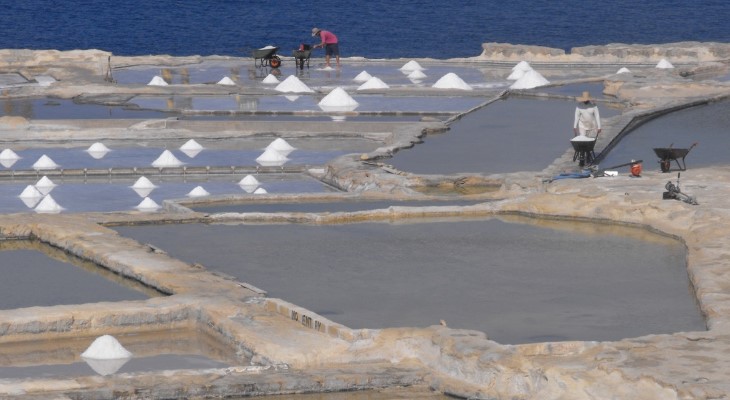
©viewingmalta.com - (Pauline Dingli)
While testaments to Malta’s maritime tradition are all around you, it all comes into focus at the Malta Maritime Museum in Vittoriosa. Housed in the old naval bakery, Malta’s largest museum illustrates the island’s maritime history within a Mediterranean context.
Do before you return home, don’t forget to take one long hard look at the sea!
Fancy a taste of Malta’s maritime tradition? The Mediterranean Culinary Academy organises four-hour workshops every week exploring Malta’s fascinating maritime history while teaching you to prepare and cook a locally caught fish and create a dish using seasonal ingredients from its network of farmers.
If you would like to ensure the fish you are eating is sustainably sourced, check the “Quick Fish Guide” created by local NGO fish4tomorrow.
Throughout Spring and Summer 2018, Maren Richter curates a major visual arts exhibition inspired by the sea that surrounds us (Dal-Bahar Madwarha) as part of the Valletta 2018 European Capital of Culture programme. The exhibition includes large installations, performances and public interventions across the island including the former fish market at Barrier Wharf in Valletta.